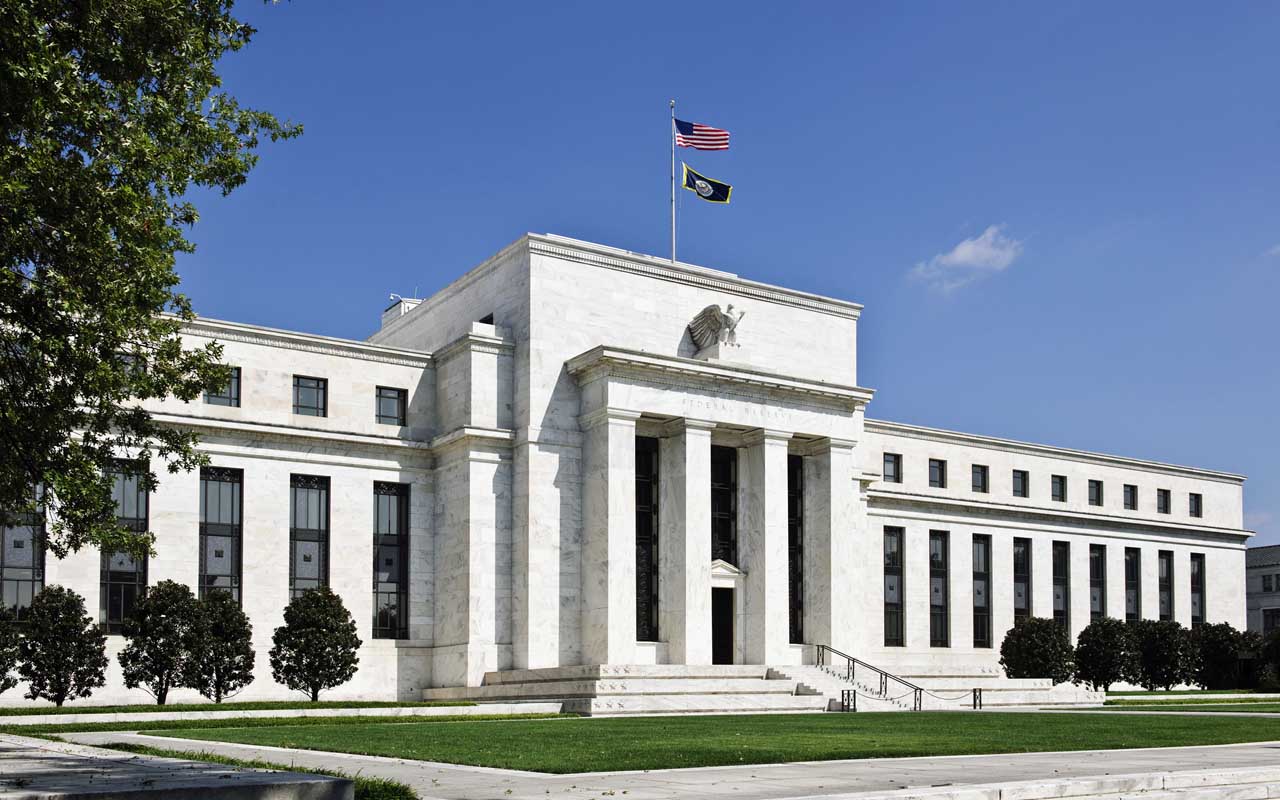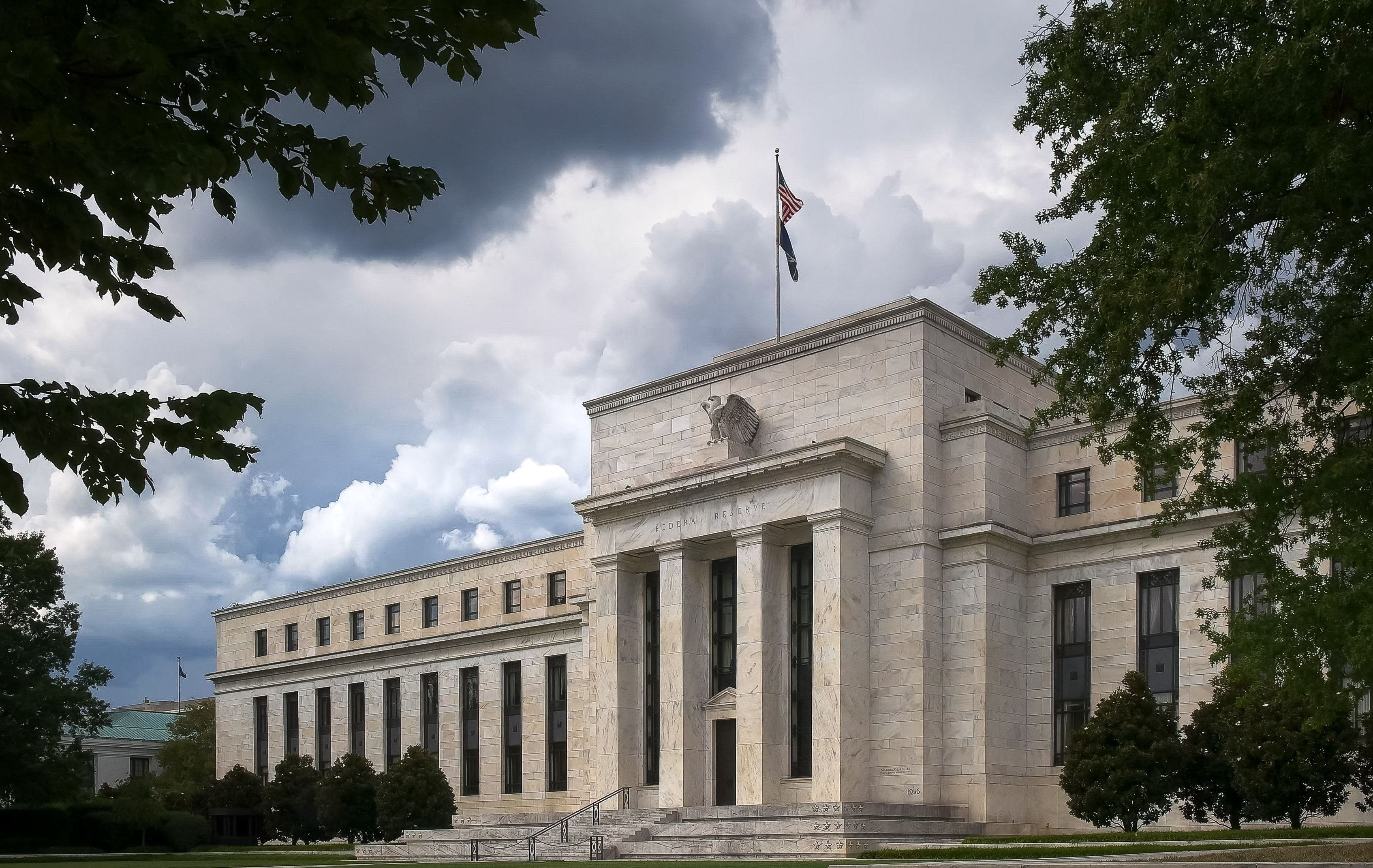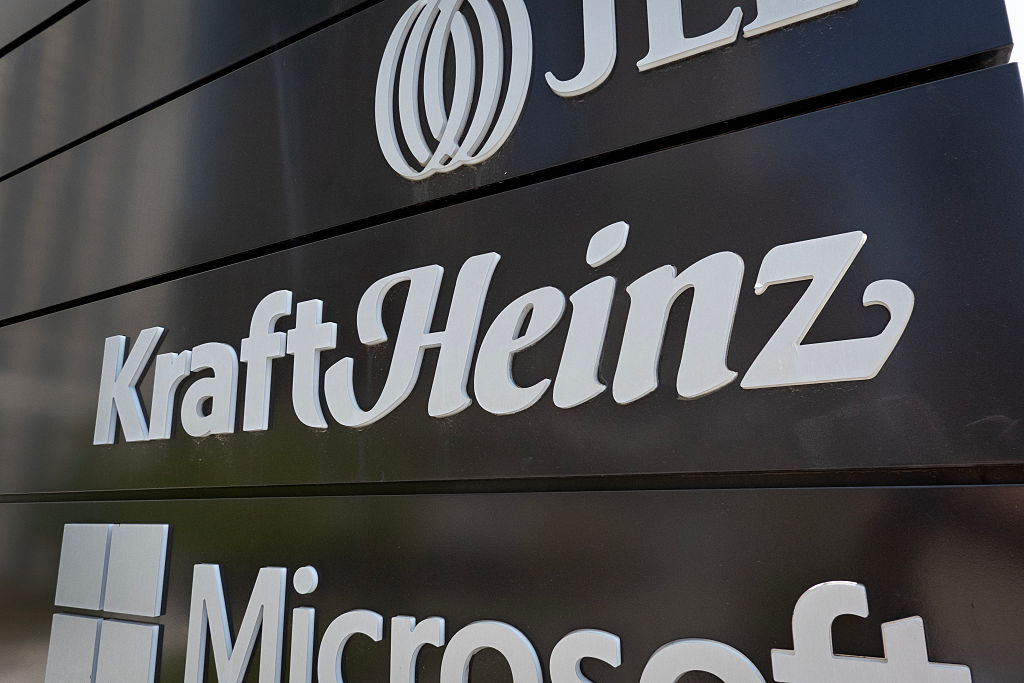5 Signs the Stock Market Has Reached a Tipping Point
An old investment saw goes like this: "Market tops are processes, bottoms are events." This means that in the stock market, it takes time for all the moving parts to top out and head lower.


An old investment saw goes like this: "Market tops are processes, bottoms are events." This means that in the stock market, it takes time for all the moving parts to top out and head lower. It's usually a gradual affair, unlike major bottom that are often marked with panic selling and sharp moves.
The market can easily shrug off events that could hurt it, such as a wide miss on economic growth or unusually weak housing statistics. However, when major issues start to accumulate, before we realize it, we've hit a tipping point where there are too many changes for the bull market to handle.
Let's be clear: We are not trying to pick a top or master market timing. But investors should take action when it becomes clear things have changed for the worse. And the sooner we recognize that change, the better.
Here are five signs investors should look for to gauge the likelihood of a stock market top. They're not set in set in stone – what was effective at one peak might not be effective for the next. However, evaluating these major areas still can provide clues as to the market's health and intentions.

Declining Corporate Fundamentals
The health of large and small businesses alike is intimately connected to the health of the stock market. Therefore, it is important for investors to pay attention to fundamentals such as revenues, earnings, debt loads and wages.
Currently, many people believe the stock market is overvalued, meaning that the price for a share of stock is very high compared to a certain fundamental metric. They might cite the S&P 500 Index's price-to-earnings (P/E) ratio of 22.3, based on the past year's earnings. That is far higher than the historical mean P/E of 15.8, so there is indeed an argument that stock prices are a bit high.
The problem is that we cannot distill down "overvaluation" to a single number, such as this one. The market can justify higher valuations if growth is also higher.
What worries Yung-Yu Ma, Chief Investment Strategist at BMO Wealth Management, would be potential imbalances in the economy. We saw that with technology before the 2000 market top and financial instruments in 2007. The good news is that despite talk of "bubbles of everything," there are no major imbalances at this time.
Corporate, consumer and government debt are high, but Ma believes the ability to service that debt is more important. "Headline debt looks bad, but it is really not bad," he says. Ma looks at metrics such as cash flow to determine if the interest payments are safe. Right now, he thinks they are.
The continuing trade tiff with China is potentially problematic, with economists forecasting a slowing of U.S. growth this year and next. And interestingly, Ma sees falling, not rising, oil prices as an issue thanks to the importance the energy sector has in the economy. Consumers might like to see oil priced in the $40-per-barrel range (from its current $57), but oil-and-gas stocks would not.

Economic Weakness
From employment to consumer spending to even corporate, small-business and consumer confidence, it is difficult to make an argument that the economy is even close to a recession.
The economy might have cooled slightly from its record-setting pace from previous quarters, but gross domestic product (GDP) data still is quite good. The same goes for the monthly employment reports from the Bureau of Labor Statistics, the past couple of which have shown slowing but still OK job growth.
It would take a multitude of weaker reports from across the U.S. economy, over several months' time, before investors would have to really be concerned about a stock market top.
One quick measure that many people follow is unemployment, which is at a multiyear low. But unemployment can be a double-edged sword. The U.S. is considered to be at "full employment" – a level where most everyone who is able and willing to work has a job. Any lower unemployment is likely to force competition for workers and drive up wage costs.
The problem, according to Shailesh Kumar, Founder and CEO of investment analysis and research website Value Stock Guide, occurs when the unemployment rate bottoms and starts to head back higher. Corporate profits are pressured by these rising costs.
For now, unemployment remains in a good place, but that can change quickly.

Interest-Rate Warning Signals
Many people believe the Federal Reserve is the only defense against the market falling right now. After years of near-zero short-term interest rates, the Fed abandoned its plans to raise, or normalize, rates because of several weaker economic reports. In fact, it has cut its benchmark rate three times in 2019.
Sven Henrich, who runs the macro and technical investing site NorthmanTrader.com, wrote in June that whenever the Fed cut rates when unemployment was below 4%, a recession followed and unemployment shot up to around 6% to 7%. We can speculate about why that is. But when the Fed sees the need to add liquidity to an economy that is already at full employment, something must not be quite right. Clearly, this is a concern for the stock market.
For the past few months, many analysts looked at the U.S. Treasury yield curve as flashing an early warning sign for the economy, and then for the stock market. The yield curve simply measures the interest rates on Treasury securities across the maturity spectrum, from three months to two years to 30 years. The normal shape of this curve is upward-sloping. When it flattens or inverts, with short-term securities offering higher yields than long-term securities, it signals uncertainty and pessimism.
This curve partially inverted over the summer, with the 3-month Treasury yield briefly eclipsing the 10-year. The Fed's rate cuts have knocked shorter-term rates lower since then, however, leading to a much more "normal" upward-sloping curve.
One more factor to watch is the relationship between stocks and bonds from a valuation perspective.
Robert R. Johnson, Professor of Finance at Creighton University's Heider College of Business, says the valuation for stocks still is more attractive than bonds. To make an apples-to-apples comparison, he converts bond yields into pseudo-P/E ratios. For example, at its current yield of roughly 2%, the 10-year Treasury note trades at a pseudo-P/E ratio of around 50. Again, the P/E ratio for the S&P 500, based on the past year's earnings, is 22.8, suggesting that stocks still are cheaper than bonds. This means there is less incentive for investors to sell stocks to buy bonds.
From a trading perspective, however, the bond market does look to be stretched thin. Yields have already fallen back close to where they were at the time of the 2016 election. That makes for an argument that long-term interest rates will climb again (even if only temporarily), and thus bond prices, which go down when rates go up, will cool off. Should the 10-year yield swell to 3%, where it was in late 2018, that would make its P/E ratio 33.3 – much closer to that of the S&P 500. Some investors might take that opportunity to sell stocks and buy bonds.

Waning Sentiment
Sentiment analyzes how investors think about stocks, and that is tricky to quantify. It basically boils down to how much risk people are willing to take to achieve the same potential investment return. When people are overly excited about the market, they think they are bulletproof. They buy speculative companies and tend to ignore warnings.
One sign that investors are all too eager to invest in marginally viable companies is the level of new-issue activity. Peter Koch, founder of the personal finance blog DollarSanity.com, says the initial public offering (IPO) market is a great indicator for sentiment. Near the end of a bull cycle, IPO activity soars and more speculative companies try to raise money. The environment is favorable as investors are chasing the latest, and hottest, trends while ignoring red flags on balance sheets. The 2000 market top was preceded by red-hot IPO activity.
Recent IPOs for Uber Technologies (UBER), Pinterest (PINS) and Slack Technologies (WORK) – some of the so-called "unicorns," which are startup companies with multibillion-dollar valuations – signaled that the floodgates might be open. But this year's IPO market isn't going to come even close to reaching 2000 levels, dampened in part thanks to WeWork, whose offering fell apart because enough people were (thankfully) still paying attention to red flags.
Koch also says to look at stock buybacks. These typically pick up at market bottoms, when management believes their share prices are cheap. They tend to dry up near market tops. S&P 500 share repurchases indeed peaked in 2018 and cooled off in 2019, according to Yardeni Research data. But remember: In the wake of the Tax Cuts and Jobs Act, many American corporations repatriated cash held overseas, some of which was spent on abnormally generous buyback initiatives. This year's first quarter still saw the second-highest dollar total of buybacks in history, and Q2's buybacks, while below any point in 2018, still were greater than at any point between 2008 and 2017. Translation: This indicator isn't signaling worry yet.

Sickly Technicals
There are so many factors to consider when analyzing investments, but the stock market itself can be a great source of information. While the economy can sometimes tell you what the market's about to do, the reverse occasionally – though not always – is true too. Sometimes, stock market indicators can signal not only its own strength (or weakness), but where the economy might be headed.
Thus, it's important to look at price action itself. Specifically, you want to ask two questions:
- Are the major indices still generally trending higher, or are pullbacks starting to get bigger and stronger?
- Are the numbers of stocks advancing each day greater or smaller than the number declining? This is one part of market breadth, which tells us whether many stocks or only a few large ones are driving performance in the broader indices. (We can expand that to looking at global markets, too. Is the U.S. going it alone, or are global markets at least holding their own?)
Basically, we want the stock market to enjoy broad participation from big stocks and small, from domestic and from international, and across many sectors. If that's the case, that likely bodes well for market strength, and indicates that global economic fears are contained.
In the case of the U.S. stock market, things are looking good there. The New York Stock Exchange's advance-decline line, which measures breadth, has recently touched new highs, and eight of the market's 11 sectors are flaunting gains over the past month.
Profit and prosper with the best of Kiplinger's advice on investing, taxes, retirement, personal finance and much more. Delivered daily. Enter your email in the box and click Sign Me Up.

-
 Holiday Tax Scams: 'Tis the Season to be Wary
Holiday Tax Scams: 'Tis the Season to be WaryTax Scams Navigating tax tricks of the holiday season may be daunting, but don't let that destroy your festive spirit
-
 Metro by T-Mobile Is Giving Away This Samsung Galaxy A16: Which Plans Are Eligible?
Metro by T-Mobile Is Giving Away This Samsung Galaxy A16: Which Plans Are Eligible?Metro by T-Mobile is offering free Samsung Galaxy A16 phones on eligible plans right now. Here’s how the deal works.
-
 I Drive and Collect Classic Cars: Here’s How I Got Started
I Drive and Collect Classic Cars: Here’s How I Got StartedAre classic cars a hobby or an investment strategy — or both? Either way, the vintage car scene is much cooler and more affordable than you think.
-
 What the Rich Know About Investing That You Don't
What the Rich Know About Investing That You Don'tPeople like Warren Buffett become people like Warren Buffett by following basic rules and being disciplined. Here's how to accumulate real wealth.
-
 How to Invest for Rising Data Integrity Risk
How to Invest for Rising Data Integrity RiskAmid a broad assault on venerable institutions, President Trump has targeted agencies responsible for data critical to markets. How should investors respond?
-
 What Tariffs Mean for Your Sector Exposure
What Tariffs Mean for Your Sector ExposureNew, higher and changing tariffs will ripple through the economy and into share prices for many quarters to come.
-
 How to Invest for Fall Rate Cuts by the Fed
How to Invest for Fall Rate Cuts by the FedThe probability the Fed cuts interest rates by 25 basis points in October is now greater than 90%.
-
 Are Buffett and Berkshire About to Bail on Kraft Heinz Stock?
Are Buffett and Berkshire About to Bail on Kraft Heinz Stock?Warren Buffett and Berkshire Hathaway own a lot of Kraft Heinz stock, so what happens when they decide to sell KHC?
-
 How the Stock Market Performed in the First 6 Months of Trump's Second Term
How the Stock Market Performed in the First 6 Months of Trump's Second TermSix months after President Donald Trump's inauguration, take a look at how the stock market has performed.
-
 Fed Leaves Rates Unchanged: What the Experts Are Saying
Fed Leaves Rates Unchanged: What the Experts Are SayingFederal Reserve As widely expected, the Federal Open Market Committee took a 'wait-and-see' approach toward borrowing costs.
-
 The 24 Cheapest Places To Retire in the US
The 24 Cheapest Places To Retire in the USWhen you're trying to balance a fixed income with an enjoyable retirement, the cost of living is a crucial factor to consider. Is your city the best?
